

We accept most insurances, including Medicaid, Medicare, checks, cash, credit cards, and Care Credit Financing.
Copyright ©2025
Century Dentistry Center
Table of contents
Orthodontics is a specialized branch of dentistry treating issues with how your teeth bite together, called malocclusion. Malocclusion can result from teeth being positioned incorrectly in the jaws, leading to extensive problems when not properly corrected. Orthodontics involves using fixed and removable appliances to remedy these problems, realigning teeth, and creating a beautiful and healthier smile.
Orthodontic treatment uses fixed and removable orthodontic appliances to realign teeth into the correct positions in the jaw. It focuses on correcting bad bites, or malocclusions, such as overcrowding, teeth rotated out of position, and problems like an open bite, crossbite, underbite, and overbite. Problems such as spacing, where unsightly gaps form between teeth, can be addressed by reducing or closing these gaps entirely. Orthodontic treatment can also change the shape of the jaw using appliances like a palatal expander to widen the upper jaw. This sort of treatment is often necessary if a child sucks their thumb and has pulled the upper jaw outward, making it elongated, narrower, and less able to accommodate developing teeth.
There are several different orthodontic treatments available which include the following.
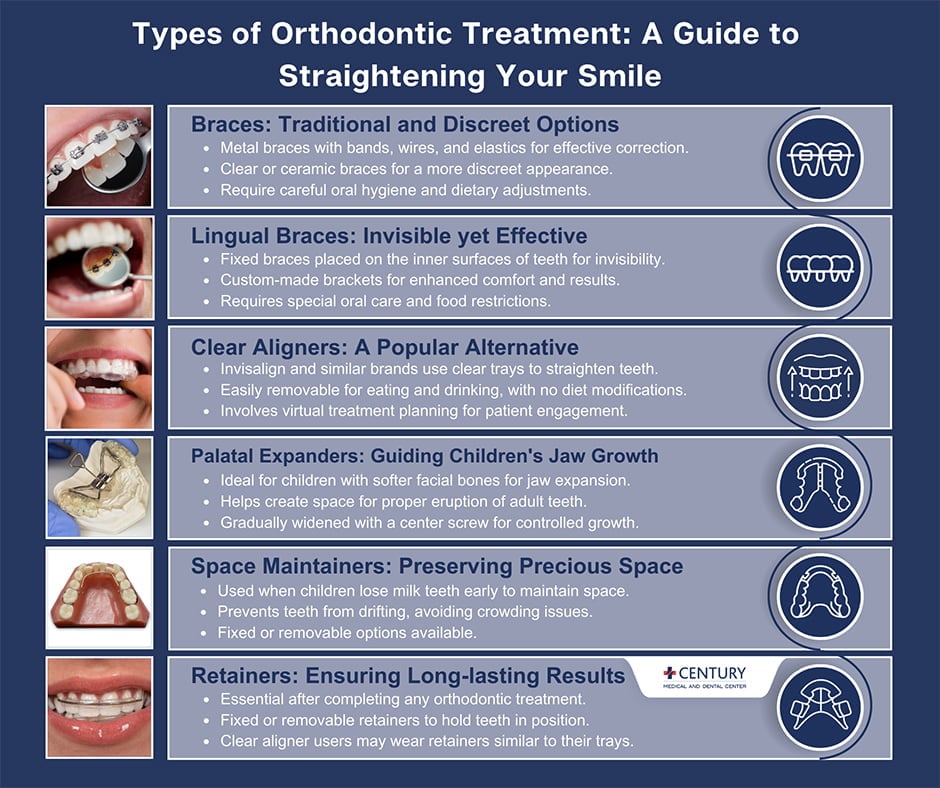
Braces have brackets cemented onto teeth for the duration of treatment and attached to bands, wires, and elastics. Various braces are available, including traditional metal braces and clear or ceramic braces that are more discreet. Fixed braces are extremely effective and are ideal for people with more complicated orthodontic problems requiring correction, and they work continuously to straighten teeth. However, people with fixed braces need to take extra care of their oral health and thoroughly clean around and between the brackets and wires after eating, using special dental tools. They must also modify their food choices for the duration of treatment, avoiding any that are very sticky, hard, or crunchy and which could become stuck around or damage the brackets and wires.
These are also fixed braces, but unlike traditional braces that fit on the outer surface of your teeth, these fit on the inner surfaces, so they are virtually invisible. They have custom-made brackets that are thinner and more comfortable and can provide excellent results. If you have lingual braces, you must clean around them carefully and avoid sticky, hard, or crunchy foods that could damage them. Lingual braces are not suitable for everyone but work very well in specific situations.
Clear aligner therapy is extremely popular and is often an alternative to fixed metal braces. One of the most well-known brands is Invisalign, and instead of using brackets and wires to straighten teeth, you would wear a series of clear aligner trays custom-made to fit tightly over teeth. Treatment is very easy, as each set of aligner trays is worn for approximately two weeks before they are discarded, and you move on to the next set in the series.
Gradually, the aligner trays place exactly the right amount of pressure on teeth, moving them into predetermined positions. Another advantage of this system is the ability to see virtual images of the predicted results before you begin treatment using a scan, photographs, and x-rays of your teeth. The process also allows patients to become more involved in treatment planning and achieve the desired results.
Unlike fixed braces, removable aligners are very easy to care for as you take them out for every meal and when drinking anything other than water, and there is no need to adjust your oral care routine or dietary choices.
Palatal expanders are sometimes recommended for children as they work well while their facial bones are softer and still developing and when it is easier to guide their growth. As mentioned earlier, a palatal expander helps widen the upper jaw, creating enough space so adult teeth can begin to erupt normally without needing tooth extractions or additional procedures. Palatal expanders fit over the upper palate and are gradually widened by turning a screw in the center of the device.
These are fixed or removable and are used when a child loses primary or milk teeth too soon. They are designed to keep the space open so that when the adult teeth are ready to come through, there is plenty of room for them to erupt normally. Without using space maintainers, the milk teeth could drift towards the empty gap, resulting in adult teeth coming through crooked and overcrowded and requiring orthodontic treatment to correct them.
Regardless of which orthodontic appliance you choose to straighten your teeth, you must wear a retainer after treatment ends. Retainers can be fixed or removable, so if you choose clear aligner therapy, your retainer will look just like an aligner. If you have a fixed retainer, it is cemented onto your teeth and can be as simple as a thin wire fitted on the inner surfaces of your teeth to hold them in position.
It’s essential to wear retainers after the completion of treatment. Otherwise, your teeth will try to return to their original positions, wasting all your hard work and money. Initially, you will need to wear your retainers all the time to maintain the results, and we can advise you when it is safe to reduce their use gradually.
The benefits of orthodontic treatment can be considerable. Ensuring your teeth can bite together properly can help reduce your risk of oral health problems. The advantages of orthodontic treatment can include the following.
Nice office, amazing and helpful front desk staff! I have been going here for ages. They are only getting better. Highly recommended
…
Previously, orthodontics was used for children and teenagers. Nowadays, we are just as likely to treat the parents or grandparents of our younger patients as you are never too old to benefit from a healthy, well-aligned smile. Provided you have strong teeth that are generally healthy and do not have any significant decay or large fillings, then adult orthodontics is almost certainly an option.
The thought of wearing highly visible metal braces deterred many adults from seeking orthodontic care during adulthood, but the introduction of newer, nearly invisible orthodontic systems has greatly increased the popularity of teeth straightening for adults. Most people seek adult orthodontics to improve the appearance of their smile, but the potential dental health benefits of straighter teeth are also worth consideration.
Adult orthodontics can be used as a standalone treatment or sometimes as part of a smile makeover. Cosmetically oriented braces focus on correcting the alignment of front teeth and are not designed to correct more significant bite issues. This option can be a more conservative choice than choosing multiple veneers or crowns, even though treatment can take a little longer to complete.
The time required to complete orthodontic treatment depends on the complexity of the problems needing correction. Typically, treatment takes a year but can take up to two years or longer when complicated bite issues are present. If you only require cosmetic braces to help perfect the alignment of your front teeth and where no significant tooth movements are needed, treatment may be complete in just a few months.
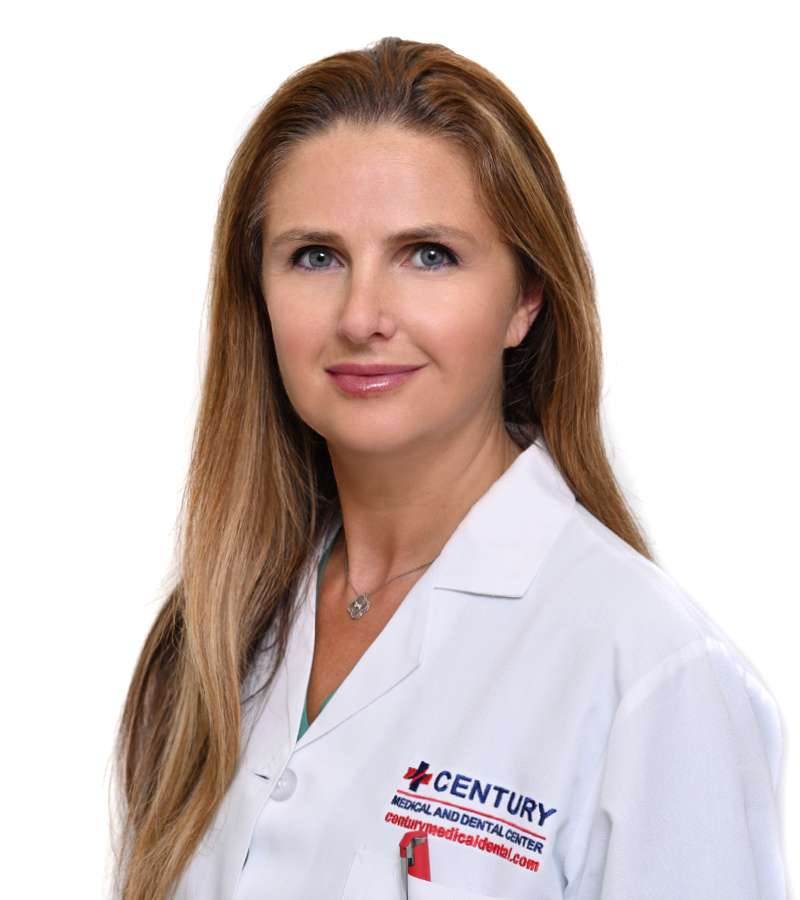
Family Dentist
Brooklyn
Gravesend
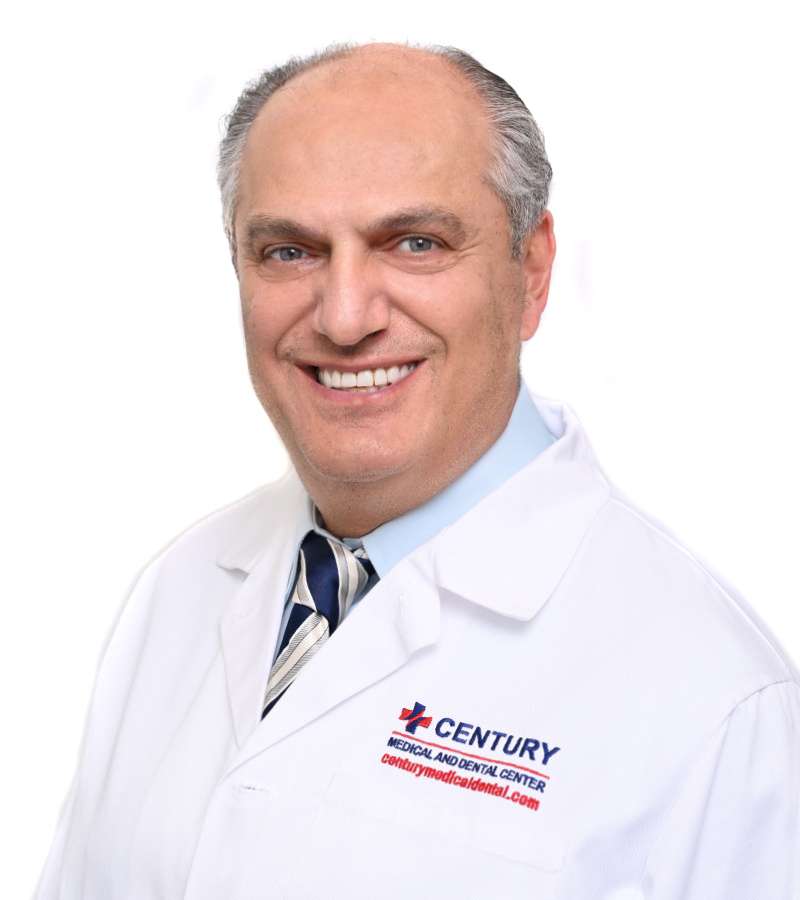
Family Dentist
Manhattan
Manhattan
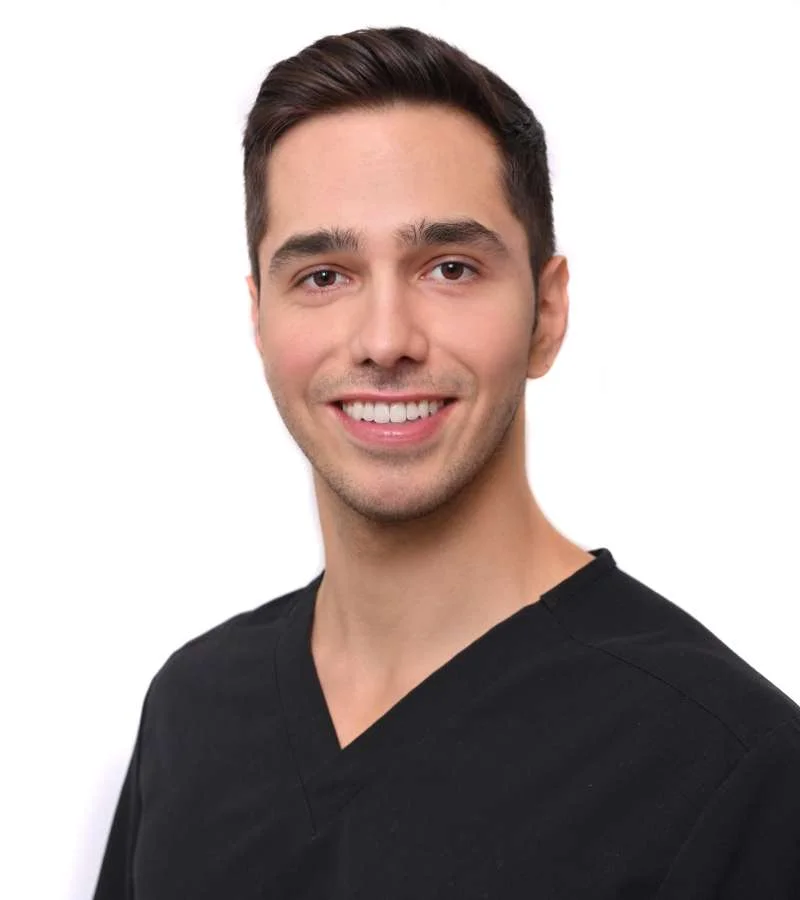
Family Dentist
Brooklyn & Manhattan
Manhattan, Downtown

Dentist
Brooklyn & Manhattan
Gravesend, Manhattan, Downtown

Dentist
Manhattan
Manhattan
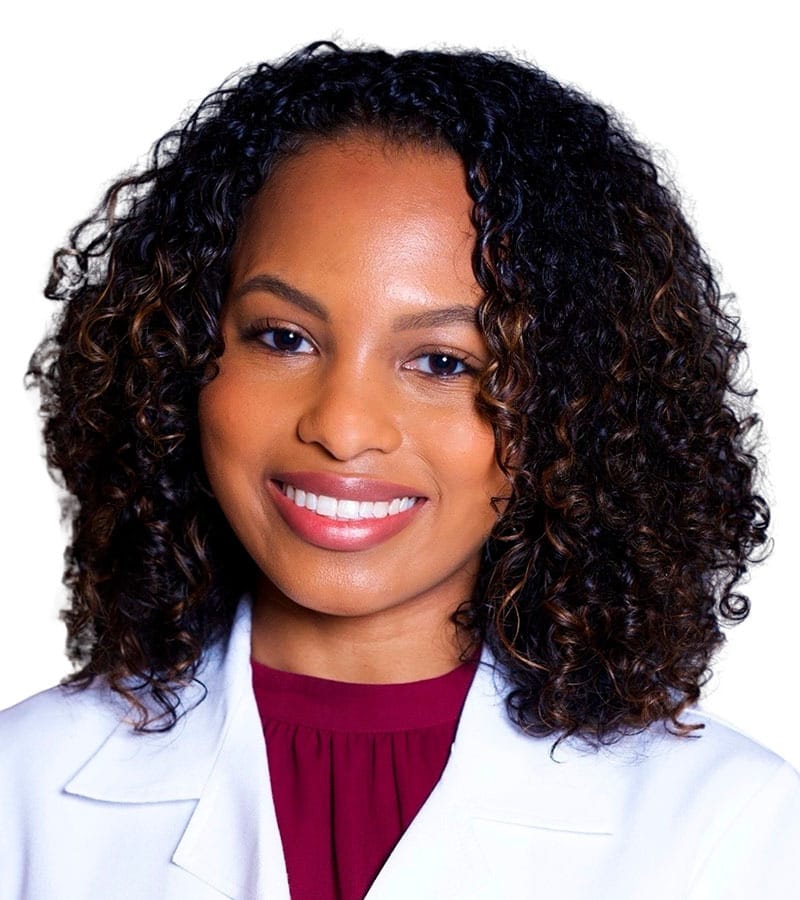
Dentist
Brooklyn & Manhattan
Manhattan, Livingston

Dentist
Brooklyn & Manhattan
Manhattan, Livingston
The price varies according to the type of orthodontic system selected and the duration of treatment. Cosmetic braces will be considerably cheaper than treatment lasting a year or two. Metal braces are generally the most affordable option and provide great results, but they are very visible in the mouth. Clear aligners can cost slightly more but are very easy to use and nearly invisible. Lingual braces tend to be more expensive as the brackets are custom-made.
Most people investigate orthodontics because they want a more attractive smile, but it is well worth remembering that treatment can improve the overall function of your teeth and help protect your oral health, making it an excellent investment in your dental health. When you visit Century Dental, we can assess your bite, determine which problems would benefit from correction, and discuss appropriate orthodontic options in greater detail.
Century Medical and Dental Center is an accredited healthcare facility in NY that operates in accordance with Article 28, a public health law. This law regulates and recognizes accreditation for public healthcare facilities, ensuring they are licensed and operated correctly. By undergoing the Article 28 process and achieving accreditation, Century Medical and Dental Center demonstrates its commitment to meeting the highest standards of care.
As a multidisciplinary medical center, we have highly qualified doctors, nurses, and support staff who are working hard to provide the best medical care to patients in Midtown Manhattan, NY, Downtown Brooklyn, NY, including Brooklyn Heights, Dumbo, Prospect Heights, Park Slope, Clinton Hill, Boerum Hill, Red Hook, and Bedford-Stuyvesant.